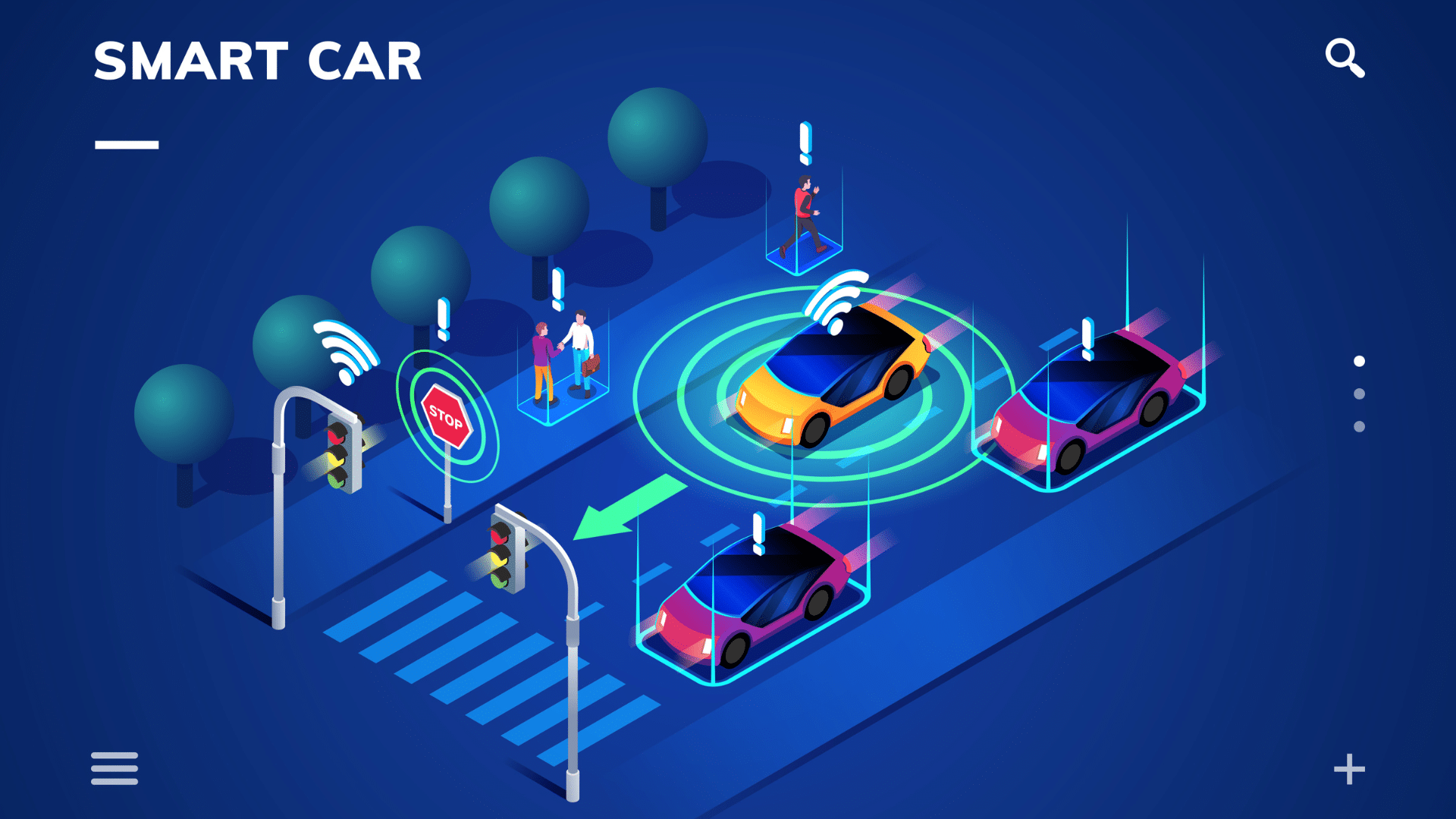Unlocking the Potential of 5G-V2X in the Automotive Industry

The Core of 5G-V2X—Revolutionizing Vehicle Communication
5G-Vehicle-to-Everything (5G-V2X) uses fifth-generation mobile networks to communicate with other cars, infrastructure, and pedestrians in a responsive and dependable manner. It supports safety-critical applications, including platooning, remote driving, and real-time traffic flow management using 5G networks’ low latency, high throughput, and reliability.
These characteristics allow quick and efficient reactions to dynamic traffic circumstances. As a result, it decreases accident risks and promotes road safety. 5G-V2X maximizes route management and reduces congestion, which adjusts traffic efficiency and fuel consumption for environmental sustainability. SDN integration in 5G-V2X frameworks boosts network management and service delivery for more intelligent traffic systems and real-time vehicular communications. Consequently, the technology allows more connected and driverless cars and upgrades traffic networks for security, economy, and sustainability.
Key Innovations Driving 5G-V2X
Groundbreaking Advancements in 5G Vehicle Communication
Through its latency reduction and service quality improvements, 5G-V2X has transformed vehicle communication. Unlike 4G’s more milliseconds, 5G networks might have only a few millisecond latencies. Real-time applications need such creativity to quickly send and receive vital safety signals in-vehicle communication networks. This capacity is boosted by 5G’s URLLC, which supports autonomous driving and ADAS. For instance, one of Ericsson’s patents describes an adaptive transmission format that boosts latency according to moving vehicle speed.
Similarly, one of Nokia’s patents optimizes device-to-device communication frameworks for high-quality, ongoing vehicle network safety and efficiency connections. Such advances are fueled by network slicing. It assigns network segments for certain traffic types to enhance service quality while managing network traffic better. Be informed that key innovators in 5G V2X are LG, Huawei, Toyota, Qualcomm, and Ford.
Integration of Virtual Reality (VR) Applications in 5G-V2X
VR applications in 5G-V2X have also expanded automobile sector opportunities. One of Samsung’s patents provides bandwidth-adaptive VR streaming for real-time vehicle remote control via VR interfaces. The application boosts driving and offers breakthroughs in remote automobile diagnostics and entertainment while changing how users interact with autos.
The combination of 5G’s high throughput and persistent VR streaming without interruptions enables more immersive experiences that were previously impossible owing to bandwidth limits. The high frequency and broad bandwidth of millimeter wave (mmWave) technologies permit massive data transport for high-quality VR applications. It also enables automobile AR applications for real-time traffic updates, navigation aids, and danger detection for greater safety and driving economy. Undoubtedly, the ongoing development of such technologies shows 5G-V2X’s promise to alter vehicle communication networks.
The Shift to Cellular: Advantages of C-V2X

Transition from Wi-Fi-based Systems to Cellular-based C-V2X Communications
V2X communications formerly used Wi-Fi-based technologies, including DSRC, in the 5.9 GHz band with a 300-meter range. This IEEE 802.11p-based technology allowed cars and infrastructure to communicate without a cellular network. Yet, the switch to cellular-based C-V2X with 3GPP Release 14 is noteworthy. C-V2X uses the strong and heavily deployed LTE network infrastructure for better vehicle communications range and dependability. Cellular solutions penetrate and cover non-line-of-sight situations better than DSRC. Thus, with 5G, C-V2X will use mmWave technology to lower latency to sub-millisecond levels and exponentially increase data transmission speeds for future autonomous driving. Unlike DSRC, which calls for expensive roadside equipment to be universally successful, cellular networks can scale to deploy many linked cars without major infrastructure investment.
Advantages of C-V2X in Automotive Use Cases
In automotive applications, C-V2X promotes reliability, scalability, and performance. C-V2X preserves a stable V2V communication channel for platooning while coordinating braking and acceleration. Integrating C-V2X with current cellular networks renders it expandable to more linked cars. High vehicle numbers in urban areas may overload Wi-Fi-based systems, so scalability is essential. Performance-wise, C-V2X boosts collision avoidance systems and real-time traffic rerouting performance with lower latency and better throughput. Such uses need the quick transfer of large volumes of sensor data between cars and infrastructure, which C-V2X can do better owing to its network capabilities. Remember, C-V2X may enhance communication range by 30% and reliability in blocked situations for urban coverage.
5G-V2X and Autonomous Vehicles: Driving Force for Innovation
Role of 5G-V2X in Autonomous Vehicle Development
5G-V2X technology delivers high-speed, low-latency connectivity for autonomous vehicle security and efficacy. 5G-V2X lets cars interact with each other and road infrastructure for autonomous driving’s complex decision-making. The 3GPP added 5G New Radio (NR) capabilities to C-V2X for platooning, expanded sensors, and remote driving, which need strong data sharing. V2N connectivity enabled by 5G networks provides cloud-based driving choices for tricky circumstances. Moreover, 5G-V2X can transmit high-volume sensor data from LiDAR and HD cameras. Such characteristics allow autonomous cars to make real-time choices based on complete, current environmental data for better safety and efficiency.
5G-V2X Support for Real-Time Decision-Making and Sensor Data Integration
5G-V2X helps autonomous vehicles make rapid choices. It delivers URLLC to analyze and act on the vehicle’s massive sensor data. 5G networks’ low latency and high reliability allow fast reactions to unpredictable road circumstances, including avoiding abrupt obstructions. ADAS that use current information need these qualities. Through eMBB, 5G-V2X integrates sensor data from radar, cameras, and ultrasonic sensors. Edge computing frameworks cut bottlenecks and guarantee vehicles have quick access to essential facts while processing data closer to its source. In addition, integrating 5G with SDN optimizes data flow across network levels for a better vehicle’s decision-making speed and accuracy. Such ongoing data acquisition and processing allows autonomous cars to learn and react to their surroundings with legendary precision and stability for developed automotive technology.
Contact our team to discuss 5G automotive project collaborations with FIC.





